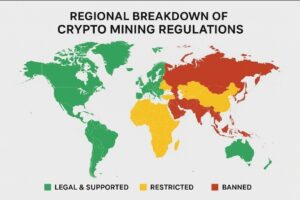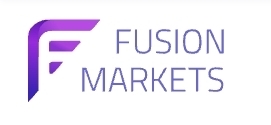Getting Started With Chia network: SSD & Hard Disk Crypto-Currency Mining/Farming
Cryptocurrency mining has seen a significant evolution with the introduction of Chia, a new and innovative digital currency that utilizes a unique approach to mining and farming. Unlike traditional cryptocurrencies that rely on energy-intensive Proof of Work (PoW) algorithms, Chia implements a Proof of Space and Time (PoST) consensus algorithm. This groundbreaking technology allows users to mine and farm Chia by utilizing SSD hard disks rather than relying on computational power. In this article, we will delve into the world of Chia mining and farming, exploring the requirements, hardware selection, setup process, optimization techniques, troubleshooting, and future outlook for this promising cryptocurrency. Whether you are a seasoned crypto miner or a newcomer to the scene, this comprehensive guide will provide you with the essential knowledge to get started with Chia SSD hard disk mining and farming. Create chia wallet.
What is Chia and how does it differ from traditional cryptocurrencies?
If you thought Bitcoin was the end-all-be-all of cryptocurrencies, think again. Chia is a new player in the game that takes a different approach to mining and farming. Created by Bram Cohen, the same genius behind BitTorrent, Chia utilizes a unique blockchain technology that emphasizes the use of storage space rather than raw processing power. So, instead of GPUs and ASICs, you’ll be putting your hard drives to work.
Benefits and advantages of Chia mining and farming
One major advantage of Chia network is its energy efficiency. Traditional cryptocurrencies like Bitcoin require intense computational power, which consumes a ton of electricity. Chia, on the other hand, uses a Proof of Space and Time consensus algorithm, which means you can mine and farm using your existing hardware without breaking the bank on your electricity bill. Another benefit of Chia is its accessibility. Since Chia mining doesn’t require expensive hardware, more people have the opportunity to participate and potentially profit from crypto mining. It’s like a more inclusive party where everyone gets to join in on the fun.
Understanding Chia’s SSD Hard Disk Mining Requirements

Explanation of Chia’s Proof of Space and Time consensus algorithm
Chia’s Proof of Space and Time algorithm is all about utilizing storage space rather than computing power. Essentially, it works by allocating a certain amount of disk space to store cryptographic proofs. These proofs ensure the integrity and security of the Chia blockchain. The more space you contribute, the higher your chances of mining and farming Chia coins. Get your chia wallet today.
Why does Chia require SSD hard disks for mining?
Unlike traditional cryptocurrencies that rely on speedy processors, Chia emphasizes fast access to large amounts of stored data. This is where SSD (solid-state drive) hard disks come into play. SSDs offer quicker read and write speeds, allowing Chia farmers to efficiently process the immense amount of data required for mining. While SSDs are not crucial, they definitely give you an edge in the race.
Selecting the Right Hardware for Chia SSD Mining
Factors to consider when choosing SSDs for Chia mining
When it comes to selecting SSDs for Chia mining, capacity is king. The more storage space you have, the more plots you can create, and the higher your chances of earning Chia coins. So, prioritize getting drives with larger capacities to maximize your mining potential. Another factor to consider is endurance. Chia mining involves continuous reading and writing of data, which can put strain on your SSDs. Look for SSDs with high endurance ratings to ensure they can handle the demands of Chia farming without wearing out too quickly. The chia network and chia ecosystem will enhance our use of crypto.
Recommended specifications for other hardware components (CPU, RAM, etc.)
While SSDs are the star of the show for Chia mining, other hardware components shouldn’t be neglected. Aim for a powerful CPU, as Chia’s farming process benefits from a speedy processor. Additionally, having ample RAM will help speed up the plotting process and improve overall system performance. Don’t forget to factor in power supplies capable of handling multiple SSDs and cooling solutions to keep your hardware happy.
Setting Up Chia Software and Wallet for Mining and Farming
Step-by-step guide to downloading and installing Chia software
Getting started with Chia mining and farming requires setting up the Chia software. First, download the Chia software from their official website. Once downloaded, proceed with the installation process, following the prompts and agreeing to the terms and conditions. It’s a straightforward process that should have you up and running in no time.
Creating a Chia wallet and configuring mining settings
After installing the Chia software, create a Chia wallet. This wallet will allow you to store, send, and receive Chia coins. Follow the wallet creation wizard, which will guide you through the necessary steps to secure your digital fortune.Once your wallet is set up, configure the mining settings in the Chia software. This involves selecting the directories where your plots will be stored and specifying the number of threads you want to dedicate to farming. Experiment with different settings to find the optimal balance between speed and efficiency.Now you’re ready to dive into the exciting world of Chia mining and farming. Good luck on your journey to growing your digital wealth!
Optimizing Chia Mining and Farming Operations for Efficiency and Profitability
Strategies for efficient plotting and managing plots
Plotting is a crucial step in Chia mining software, but it can be time-consuming and resource-intensive. To maximize efficiency, consider using parallel plotting tools like MadMax or Plotman. These tools help speed up the plotting process by utilizing multiple CPU threads and optimizing system resources. Additionally, managing and organizing your plots effectively can improve farming performance. Grouping plots together based on their size or creation date can streamline the retrieval process, saving you valuable time.
Tips for maximizing Chia mining rewards and profitability
While Chia mining can be a lucrative venture, there are a few tips to keep in mind for maximizing your rewards. First, aim to have a good balance of the number of plots and their quality. More plots increase your chances of winning block rewards, but quality matters too. Plots with a higher number of proofs challenge others, increasing your chances of success. Secondly, consider joining a mining pool to pool your resources with other miners. Pools increase your chances of winning rewards by combining efforts and sharing profits. Lastly, keep an eye on the Chia network difficulty and adjust your farming strategy accordingly. As more miners join the network, the difficulty increases, affecting your likelihood of successfully farming Chia.
Managing Chia Storage and Plotting Strategies
Organizing and optimizing storage for Chia plots
With Chia farming requiring significant storage space, it’s crucial to organize and optimize your storage setup. Consider using high-capacity SSDs or NAS devices to accommodate your plots. Utilizing RAID configurations can improve redundancy and protect against data loss. Additionally, periodically check and optimize the health of your storage devices to ensure efficient farming operations. Regular maintenance, such as running disk checks and updating firmware, can help prevent potential issues and improve overall performance.
Exploring different plotting strategies and their impact on mining performance
There are various plotting strategies you can experiment with to enhance mining performance. For instance, staggered plotting, where you start plotting multiple plots simultaneously but with different starting points, can help distribute the workload and minimize resource bottlenecks. Another approach is to prioritize utilizing fast SSDs for plotting, which accelerates the process but might increase wear on those drives. It’s a delicate balance between speed and longevity.
Troubleshooting Common Issues in Chia SSD Mining

Identifying and resolving common errors and problems during Chia mining
Sometimes, Chia mining doesn’t go as smoothly as we’d hope. Common errors like “out of memory” or “not enough space” can occur during the plotting process. To troubleshoot these issues, ensure that you have enough RAM and allocate sufficient temporary disk space for plotting. If you encounter issues during farming, verify your network connectivity and make sure your blockchain is fully synchronized. Additionally, keeping your software and drivers up to date can help prevent compatibility issues.
Troubleshooting SSD-related issues and performance bottlenecks
SSD-related problems can occasionally plague Chia miners. If you notice decreased performance or excessive wear on your SSDs, first check for firmware updates from the manufacturer. SSDs are constantly evolving, and updates can often improve performance and stability. Additionally, monitoring the temperature and ensuring proper ventilation can prevent overheating and extend the lifespan of your SSDs. If performance bottlenecks persist, consider upgrading to higher-performance SSDs or expanding your storage capacity to give your plots more room to breathe.
Future Outlook and Potential Challenges for Chia Mining and Farming
Exploring the potential growth and challenges in Chia mining
As Chia network gains popularity, the mining landscape will undoubtedly evolve. The increasing number of miners may lead to higher network difficulty, making it more challenging to win block rewards.
However, this growth also signifies a potentially larger network, more adoption, and increased coin value. It is important to stay updated on the latest trends and adapt your mining strategies accordingly.
Emerging trends and developments in the Chia ecosystem
The Chia ecosystem is constantly evolving, with developers working on new features and improvements. Some exciting developments include the integration of smart contracts, decentralized applications (dApps), and the introduction of pooling protocols, which may alter the dynamics of Chia mining.
Keeping an eye on these emerging trends and developments can provide valuable insights into the future direction of Chia and help you adapt to changes in the ecosystem.In conclusion, Chia’s SSD hard disk mining and farming present a new and exciting opportunity for cryptocurrency enthusiasts to participate in a more energy-efficient and sustainable form of digital currency generation.
By understanding the requirements, selecting the right hardware, optimizing operations, and troubleshooting common issues, miners and farmers can maximize their efficiency and profitability in the Chia ecosystem. As Chia continues to evolve and gain traction, staying informed about emerging trends and potential challenges will be crucial for staying ahead in this dynamic landscape.
With this guide as your foundation, you are well-equipped to embark on your journey into the world of Chia SSD hard disk mining and farming. Happy mining and farming!
FAQ
1. Can I mine Chia using traditional hard disk drives (HDD) instead of SSDs?
Yes, Chia mining can be done using traditional hard disk drives (HDD), but SSDs are highly recommended due to their faster read and write speeds. SSDs significantly improve the plotting and farming process, resulting in better mining performance and higher chances of earning Chia rewards.
2. Is Chia mining profitable for individual miners?
Chia mining can be profitable for individual miners, but it is essential to consider factors such as hardware costs, electricity expenses, and network difficulty. As with any cryptocurrency mining venture, it is advisable to conduct a thorough cost-benefit analysis before investing in equipment and resources.
3. How can I optimize my Chia mining operations for better efficiency?
To optimize your Chia mining software operations, you can employ strategies such as parallel plotting, optimizing storage configurations, and adjusting plotting and farming intervals. Additionally, staying up-to-date with the latest developments in Chia’s mining ecosystem and implementing best practices can help maximize efficiency and profitability.
4. What are the potential challenges associated with Chia farming?
One of the potential challenges with Chia farming is the amount of storage space required for plotting and storing the cryptographic proofs. As the Chia network grows, the demand for storage space will increase. It is crucial to plan and manage storage effectively to accommodate future growth. Additionally, network difficulty adjustments and changes in Chia’s ecosystem can impact farming rewards, requiring farmers to stay updated and adapt their strategies accordingly. Create your chia wallet and stand to gain airdrop.




